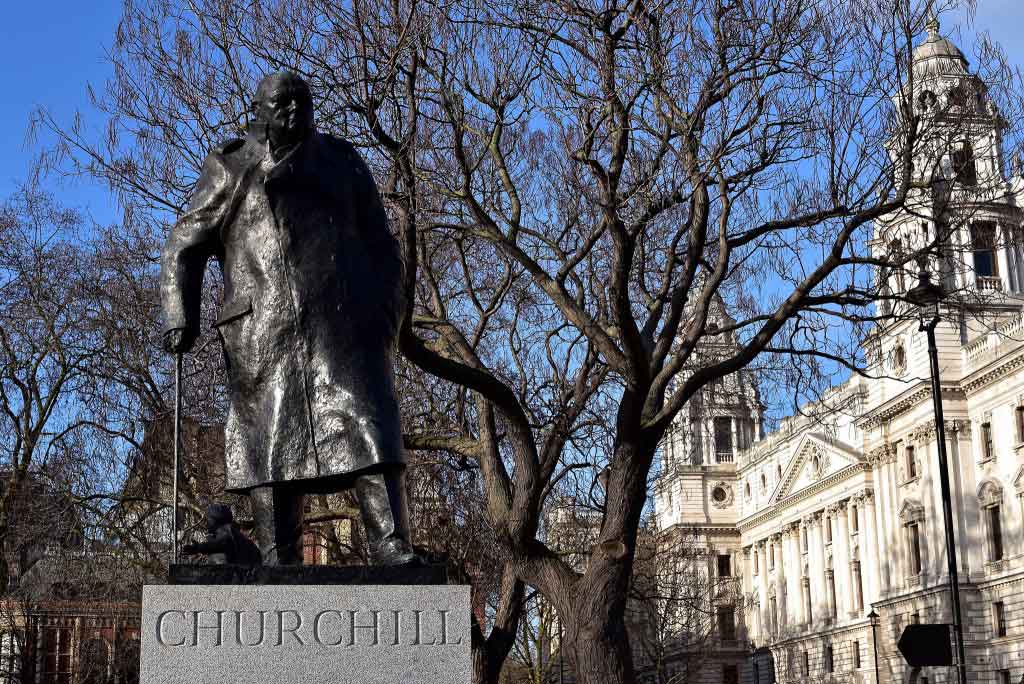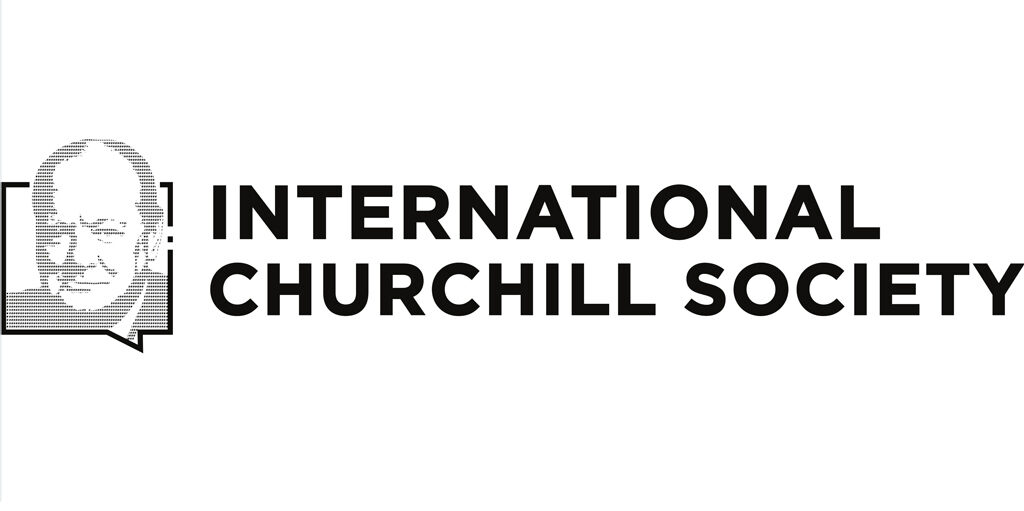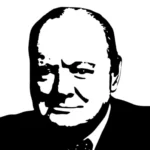
Finest Hour 141
History Detectives – Coventry: What Really Happened

Winston Churchill, Parliament Square, London © Sue Lowry & Magellan PR
June 9, 2013
Finest Hour 141, Winter 2008-09
Page 30
It is endlessly repeated that Churchill let Coventry be destroyed to protect secret intelligence. FH asked his biographer for his final conclusions.
By Sir Martin Gilbert
Sir Martin Gilbert CBE has been Sir Winston Churchill’s official biographer since 1968. Although Finest Hour has covered this subject before (see for example http://xrl.us/bjaep), we asked Sir Martin for his assessment based on his most recent research.
On the night of 14 November 1940, three hundred German bombers dropped 500 tons of explosives, 33,000 incendiary bombs and dozens of parachute mines on the industrial city of Coventry. During the raid, 507 civilians were killed and 420 were seriously injured.1

2025 International Churchill Conference
A recent play at the Belgrade Theatre in Coventry, One Night In November, repeated the frequently made claim that Winston Churchill knew of the attack several days in advance, but that he held back the information to protect the most important secret of the war: the breaking of the German Enigma code at Bletchley Park. In the words of the press publicity: “…the play examines the idea that Winston Churchill had advance warning of the attack. Was Coventry sacrificed for the greater good? Or to provoke America into the war?”2
The truth about the bombing of Coventry is very different.
On 12 November 1940, Enigma decrypts made it clear that a major German bombing raid was imminent. Its code name, Moonlight Sonata, had been read in the decrypts. But the decrypts gave no clue as to the destination of the German bombers.
The Air Intelligence report that the Prime Minister was given on 12 November gave, on the basis of the latest intelligence, five possible targets: Central London, Greater London, the Thames Valley, or the Kent or Essex coasts.3
A German pilot who had been shot down on 9 November had, under interrogation, suggested that two cities—Coventry and Birmingham—would both be attacked in a “colossal raid” between 15 and 20 November (after the actual raid, which was on the 14th.) The senior Air Intelligence Liaison officer at Bletchley, Squadron Leader Humphreys, noted, in contrast to this, that there was “pretty definite information that the attack is to be against London and the Home Counties.” The Intelligence analysts at Bletchley considered the German pilot’s information “doubtful,” as it was earlier than the information available to Squadron Leader Humphreys.4
Churchill was sent a summary of these reports on the morning of 14 November; he read them just after midday, on his return from Neville Chamberlain’s funeral. The summary informed him that whatever the target, the usual counter-measures had been prepared since early that morning, and would be activated as soon as the precise target was known.
In the Air Ministry summary, Churchill read that the target area would be “probably in the vicinity of London.” If, however, “further information were to indicate Coventry, Birmingham or elsewhere,” it was hoped that the standard “Cold Water” instructions for counter-measures could be got out in time.5 These were instructions to rush fire engines and civil defence personnel to the area indicated from all the surrounding towns in a wide arc.
That afternoon, Churchill prepared to leave Downing Street by car to spend the weekend at Ditchley Park, north-west of Oxford. As his car was about to leave, John Martin, his Principal Private Secretary, handed him a top-secret message in a locked box. As the car reached the Albert Memorial, Churchill read the message. It was the latest intelligence from Brigadier Menzies—“C”—head of the Secret Intelligence Services. Churchill immediately told his driver to return to Downing Street, explaining to Martin that he was not going to spend the night peacefully in the country while the capital was “under heavy attack.”6
That there would be an attack was known, Churchill’s Junior Private Secretary Jock Colville noted in his diary that night, “from the contents of these mysterious buff boxes, which the PM alone opens, sent every day by Brigadier Menzies.” Colville did not know the contents; all he knew was that, of that particular night’s raid, “its exact destination the Air Ministry say they find it difficult to determine.”7
Early that evening Churchill waited at Downing Street for the expected attack on London, sending the two duty private secretaries that evening, John Colville and John Peck, to the underground shelter at the disused Down Street underground railway station on the Piccadilly Line, telling them: “You are too young to die.”8 He also gave instructions for the “Garden Room Girls”—the typists at 10 Downing Street—to be sent home.9
Churchill went to the underground Central War Rooms (now known as the Cabinet War Rooms), to await the Moonlight Sonata, but became so impatient for the impending attack that he spent the night on the Air Ministry roof, waiting for it to begin.10 Over London, it never did.
The moment that German radio beams made it clear that Coventry was the target, the Air Ministry ordered eight British bombers to bomb the aerodromes—south of Cherbourg—from which the attackers were expected to take off. A continuous fighter patrol was maintained over Coventry itself, and the “Cold Water” defence preparations were activated.11 These brought fire engines and civil defence personnel into Coventry from a wide area around.
The defences of Coventry had recently been strengthened. Following a German air raid on 2 November—the sixteenth on Coventry in a month—Ernest Bevin, the Minister of Labour responsible for factory production, had complained to Churchill about the poor state of the city’s protection.12 In response, Churchill had given instructions on 7 November to strengthen Coventry’s anti-aircraft defences.13 These instructions had been carried out. Around Coventry on the night of 14 November were five times as many anti-aircraft guns per head of the population as there were around London, and one hundred British fighters were airborne.14 But that could not save the city from the firestorm created by the incendiary bombs.
On November 12th, Enigma had revealed a raid in prospect, but not the target. At the moment on November 14th when the German radio directional beams revealed the target, all possible counter measures had been taken without delay.
ENDNOTES
1. A larger number of civilians—545—had been killed in the Coventry-Birmingham area in the previous month. The number of dead in London for that same month was 5090. (Premier papers, 3/108, folios 39-43).
2. “The Belgrade Theatre presents One Night in November by Alan Pollock.” See http://xrl.us/owr4j.
3. A1 1(W). Memorandum to Directorate of Home Operations, 12 November 1940: Air Ministry papers, 2/5238.
4. A1 1(W). Memorandum to Director of Air Intelligence, 12 November 1940: Air Ministry papers, 2/5238.
5/ Air Staff summary, 14 November 1940: Air Ministry papers, 2/5238.
6. Sir John Martin, letter to The Times, 26 August 1976, published 28 August 1976.
7. John Colville diary, 14 November 1940.
8. Ibid.
9. Sir John Martin, private letter, 24 February 1983.
10. John Colville diary, 14 November 1940.
11. War Cabinet No. 289 of 1940, 15 November 1940: Cabinet papers, 65/10.
12. Letter marked “Urgent.” 7 November 1940: Premier papers 3/108, folios 47-8.
13. “Action this Day,” Prime Minister’s Personal Minute, D114, 8 November 1940: Premier papers, 3/108. Folio 45.
14. Sir Archibald Sinclair, Secretary of State for Air, to Churchill, 15 November 1940: Premier papers, 3/22/3, folio 199.
Subscribe
WANT MORE?
Get the Churchill Bulletin delivered to your inbox once a month.



